
Download our e-book of Introduction To Python
Related Blog
Matplotlib - Subplot2grid() FunctionDiscuss Microsoft Cognitive ToolkitMatplotlib - Working with ImagesMatplotlib - PyLab moduleMatplotlib - Working With TextMatplotlib - Setting Ticks and Tick LabelsCNTK - Creating First Neural NetworkMatplotlib - MultiplotsMatplotlib - Quiver PlotPython - Chunks and Chinks View More
Top Discussion
How can I write Python code to change a date string from "mm/dd/yy hh: mm" format to "YYYY-MM-DD HH: mm" format? Which sorting technique is used by sort() and sorted() functions of python? How to use Enum in python? Can you please help me with this error? I was just selecting some random columns from the diabetes dataset of sklearn. Decision tree is a classification algo...How can it be applied to load diabetes dataset which has DV continuous Objects in Python are mutable or immutable? How can unclassified data in a dataset be effectively managed when utilizing a decision tree-based classification model in Python? How to leave/exit/deactivate a Python virtualenvironment Join Discussion
Top Courses
Webinars
How To Train Neural Network?

Shashank Shanu
2 years ago
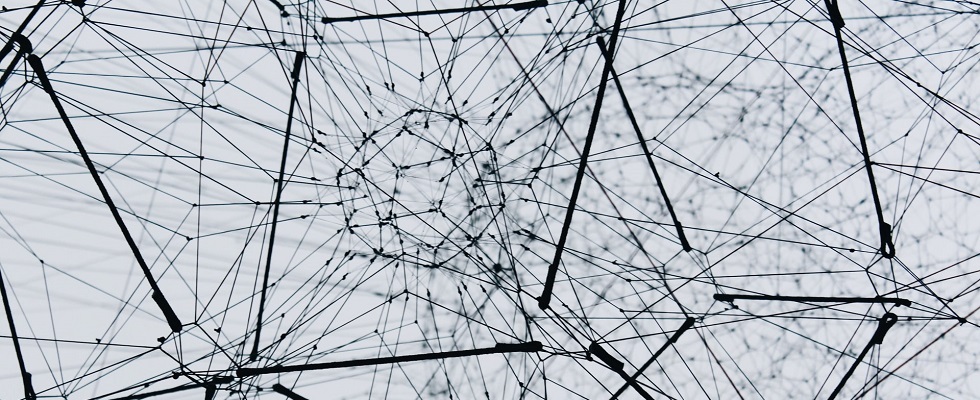
Table of Contents
- Introduction
- Why training is needed?
- Some of the optimization technique are
Gradient Descent Optimization Technique
- Challenges in Deep Learning Algorithms
1. Dropout
2. Early Stopping
3. Data Augmentation
4. Transfer Learning
Introduction
As we know, one of the most important parts of deep learning is training the neural networks. So, let's learn how it actually works. In this article, we will try to learn how a neural network gets to train. We will also learn about the feed-forward method and backpropagation method in Deep Learning.
Why training is needed?
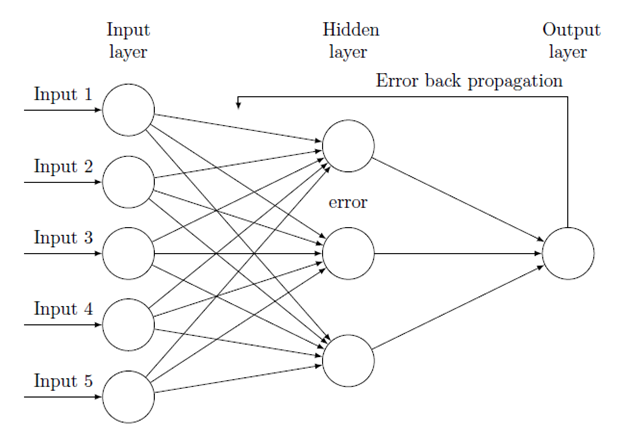
Training in deep learning is the process that helps machines to learn about the function/equation. We have to find the optimal values of the weights of a neural network to get the desired output.
To train a neural network, we use the iterative method using gradient descent. Initially, we start with random initialization of the weights. After random initialization of the weights, we make predictions on the data with the help of forward-propagation method, then we compute the corresponding cost function C, or loss and update each weight w by an amount proportional to dC/dw, i.e., the derivative of the cost functions w.r.t. the weight. The proportionality constant is known as the learning rate.
Now, you might be thinking what is learning rate?
The learning rate is a type of hyper-parameter that helps us to controls the weights of our neural network with respect to the loss gradient. It gives us an idea of how quickly the neural network updates the concepts it has learned.
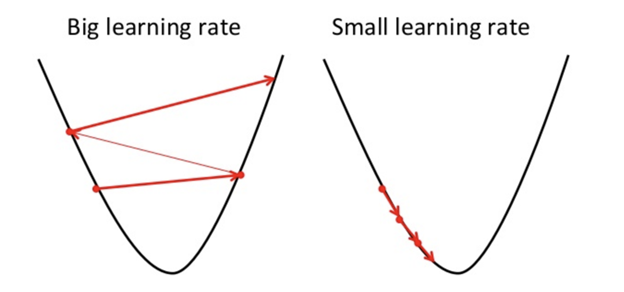
A learning rate should not be too low as it will take more
time to converge the network and it should also not be even too high as the
network may never converge. So, it is always desirable to have an optimal
value of learning rate so that the network converges to something useful.
We can calculate the gradients efficiently
using the back-propagation algorithm. The key observation of backward
propagation or backward prop is that because of the chain rule of
differentiation, the gradient at each neuron in the neural network can be calculated
using the gradient at the neurons, it has outgoing edges too. Hence, we
calculate the gradients backwards, i.e., first calculate the gradients of the
output layer, then the top-most hidden layer, followed by the preceding hidden
layer, and so on, ending at the input layer.
The back-propagation algorithm is implemented
mostly using the idea of a computational graph, where each neuron is expanded into
many nodes in the computational graph and performs a simple mathematical an operation like addition, multiplication.
The computational graph does not have
any weights on the edges; all weights are assigned to the nodes, so the weights
become their own nodes. The backward propagation algorithm is then run on the
computational graph. Once the calculation is complete, only the gradients of
the weight nodes are required for the update. The rest of the gradients can be
discarded.
Some of the optimization technique are:
Gradient Descent Optimization Technique
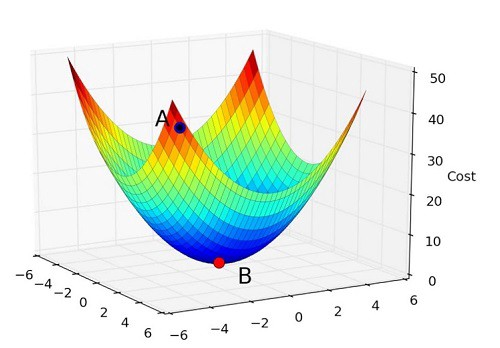
The gradient is nothing but it is the slope,
and slope, on an x-y graph, represents how two variables are related to each
other: the rise over the run, the change in distance over the change in time,
etc. In this case, the slope is the ratio between the network’s error and a
single weight; i.e., how does the error change as the weight is varied.
To put it in a straight forward way, here we mainly
want to find which weights which produces the least error. We want to find the
weights that correctly represents the signals contained in the input data, and
translates them to correct classification.
As a neural network learns, it slowly adjusts
many weights so that they can map signal to meaning correctly. The ratio
between network Error and each of those weights is a derivative, dE/dw that
calculates the extent to which a slight change in weight causes a slight
change in the error.
Each weight is just one factor in a deep neural a network that involves many transforms; the signal of the weight passes through
activations functions and then sums over several layers, so we use the chain
rule of calculus to work back through the network activations and outputs. This
leads us to the weight in question, and its relationship to the overall error.
Given two variables, error and weight, are
mediated by a third variable, activation, through which the weight is passed.
We can calculate how a change in weight affects a change in error by first
calculating how a change in activation affects a change in Error, and how a
change in weight affects a change in activation.
The basic idea in deep learning is nothing
more than that adjusting a model’s weights in response to the error it
produces, until you cannot reduce the error any more.
The deep net trains slowly if the gradient
value is small and fast if the value is high. Any inaccuracies in training
lead to inaccurate outputs. The process of training the nets from the output
back to the input is called backpropagation or back prop. We know that forward
propagation starts with the input and works forward. Back prop does the
reverse/opposite calculating the gradient from right to left.
Each time we calculate a gradient, we use all
the previous gradients up to that point.
Let us start at a node in the output layer.
The edge uses the gradient at that node. As we go back into the hidden layers,
it gets more complex. The product of two numbers between 0 and 1 gives you a
smaller number. The gradient value keeps getting smaller and as a result, back
prop takes a lot of time to train and produces bad accuracy.
Challenges in Deep Learning Algorithms
There are certain challenges for both shallow
neural networks and deep neural networks, like overfitting and computation
time.
DNNs are easily affected by overfitting because
the use of added layers of abstraction which allow them to model rare dependencies
in the training data.
Regularization methods such as drop out,
early stopping, data augmentation, and transfer learning are used during
training to combat the problem of overfitting.
Drop out regularization randomly omits units
from the hidden layers during training which helps in avoiding rare
dependencies. DNNs take into consideration several training parameters such as
the size, i.e., the number of layers and the number of units per layer, the
learning rate and initial weights. Finding optimal parameters is not always
practical due to the high cost in time and computational resources. Several
hacks such as batching can speed up computation. The large processing power of
GPUs has significantly helped the training process, as the matrix and vector
computations required are well-executed on the GPUs.
1. Dropout
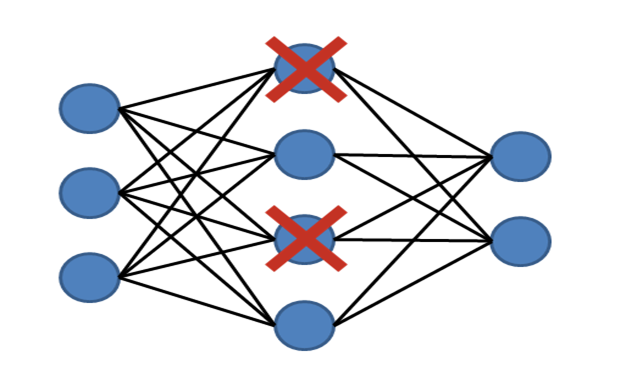
Dropout is a well-known regularization
technique for neural networks. Deep neural networks are particularly prone to
overfitting.
Let us now see what dropout is and how it
works.
In the words of Geoffrey Hinton, one of the
pioneers of Deep Learning, ‘If you have a deep neural net and it's not
overfitting, you should probably be using a bigger one and using dropout’.
Dropout is a technique where during each
iteration of gradient descent, we drop a set of randomly selected nodes. This
means that we ignore some nodes randomly as if they do not exist.
Each neuron is kept with a probability of q
and dropped randomly with probability 1-q. The value q may be different for
each layer in the neural network. A value of 0.5 for the hidden layers, and 0
for input layer works well on a wide range of tasks.
During evaluation and prediction, no dropout
is used. The output of each neuron is multiplied by q so that the input to the
next layer has the same expected value.
The idea behind Dropout is as follows − In a
neural network without dropout regularization, neurons develop co-dependency
amongst each other, that leads to overfitting.
Implementation trick :- Dropout is implemented in libraries such as TensorFlow and Pytorch by keeping the output of the randomly selected neurons as 0. That is, though the neuron exists, its output is overwritten as 0.
2. Early Stopping
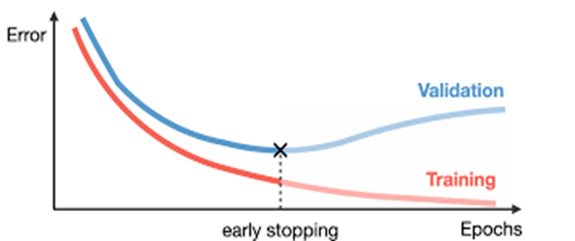
Here we try to train neural networks using an iterative an algorithm called gradient descent.
The idea behind early stopping is intuitive;
we stop training when the error starts to increase. Here, by error, we mean the
error measured on validation data, which is the part of training data used for
tuning hyper-parameters. In this case, the hyper-parameter is the stop
criteria.
3. Data Augmentation
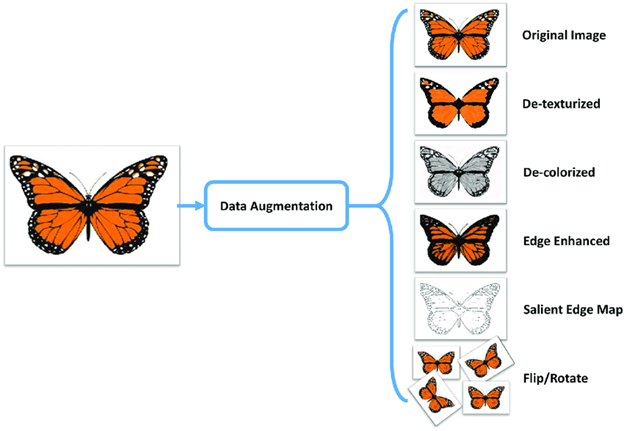
It is a process where we increase the quantum
of data we have or augment it by using existing data and applying some
transformations on it. The exact transformations used to depend on the task we
intend to achieve. Moreover, the transformations that help the neural net
depend on its architecture.
For instance, in many computer vision tasks
such as object classification, an effective data augmentation technique is
adding new data points that are cropped or translated versions of original
data.
When a computer accepts an image as an input,
it takes in an array of pixel values. Let us say that the whole image is
shifted left by 15 pixels. We apply many different shifts in different
directions, resulting in an augmented dataset many times the size of the
original dataset.
Transfer Learning
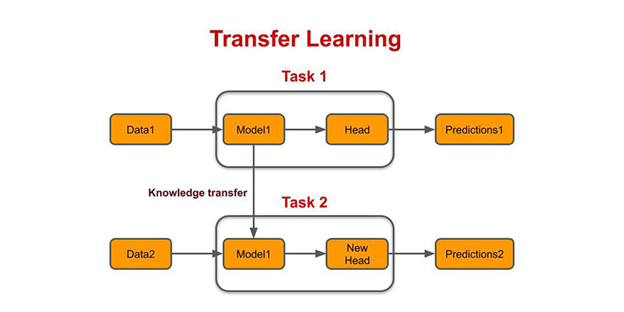
The process of taking a pre-trained model and
“fine-tuning” the model with our own dataset is called transfer learning. There
are several ways to do this. A few ways are described below −
- We train the pre-trained model on a large dataset. Then, we remove the last layer of the network and replace it with a new layer with random weights.
- We train the pre-trained model on a large dataset. Then, we remove the last layer of the network and replace it with a new layer with random weights.
- We then freeze the weights of all the other layers and train the network normally. Here freezing the layers is not changing the weights during gradient descent or optimization.
- We then freeze the weights of all the other layers and train the network normally. Here freezing the layers is not changing the weights during gradient descent or optimization.
The concept behind this is that the pre-trained model will act as a feature extractor, and only the last layer will
be trained on the current task.
I hope you liked this article.
Enjoyed reading this blog? Then why not share it with others. Help us make this AI community stronger.
To learn more about such concepts related to Artificial Intelligence, visit our insideAIML blog page.
You can also ask direct queries related to Artificial Intelligence, Deep Learning, Data Science and Machine Learning on our live insideAIML discussion forum.
Keep Learning. Keep Growing.
